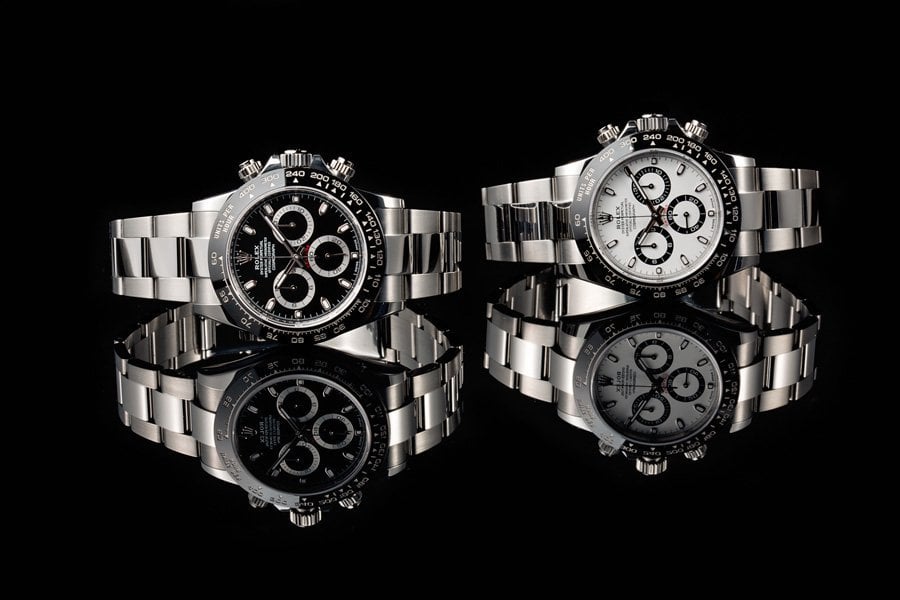The Rolex Daytona has been a fixture within the luxury watch market for decades. What some collectors might not realize is that Rolex's now-standard 'Perpetual' movement did not always power the famed chronograph. In fact, early Rolex Daytona references relied on Valjoux-based, manually-wound movements, and the collection's first self-winding caliber was based on a design from Zenith, rather than being one of Rolex's own creations. It was actually not until the current generation of Daytona watches that the brand's legendary chronograph finally received a fully in-house movement.
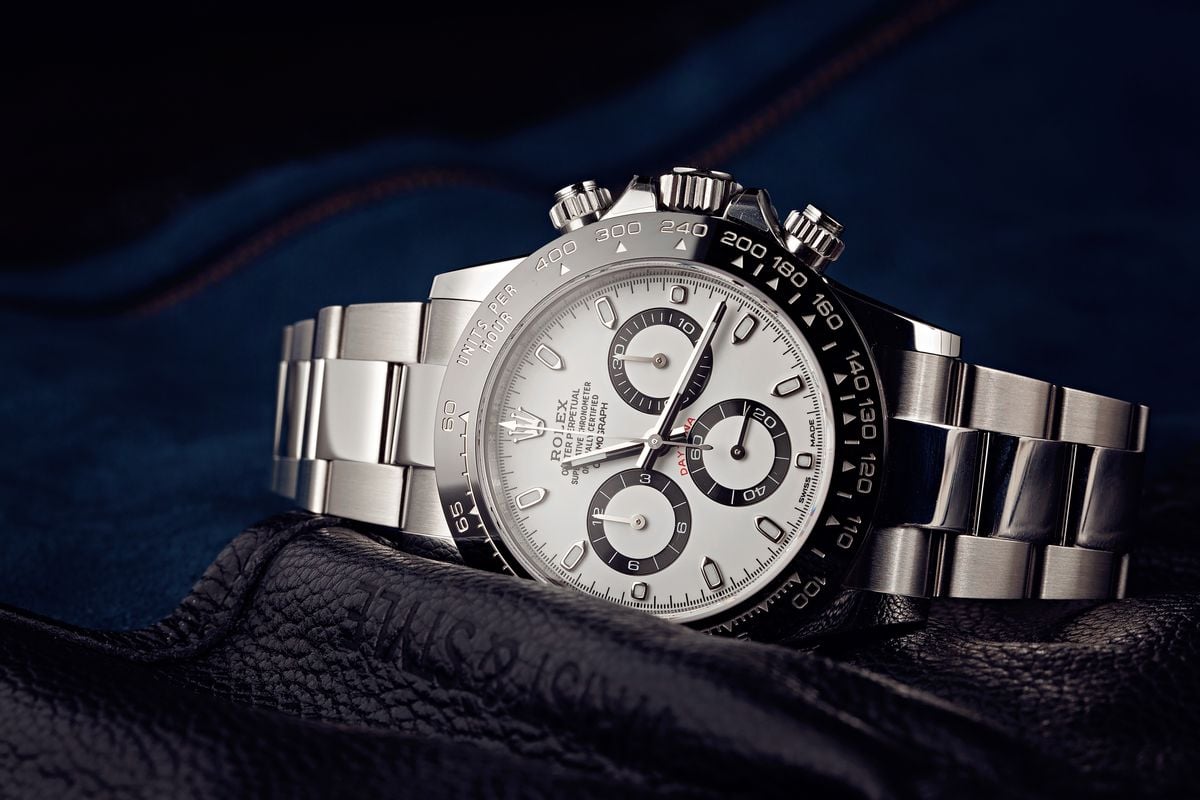
The Daytona was not Rolex's first attempt at producing chronograph watches. The brand began selling them decades prior in the late 1930s with watches such as the ref. 2303. It featured two chronograph registers on the dial and a single pusher, which was built into the crown. Several variations of the pre-Daytona chronograph would follow, many of which varied in case size and general design.
The Daytona, as we know it today, didn't start to take shape until the release of reference 6238 in 1960. It was powered by the Valjoux 72 B (then later the 722 from about 1965 onwards) and featured the Daytona's signature triple registers on the dial. However, while the ref. 6238 more-or-less resembled a Rolex Daytona, one crucial detail was missing. Its tachymeter scale was printed along the periphery of its dial, rather than on its bezel.
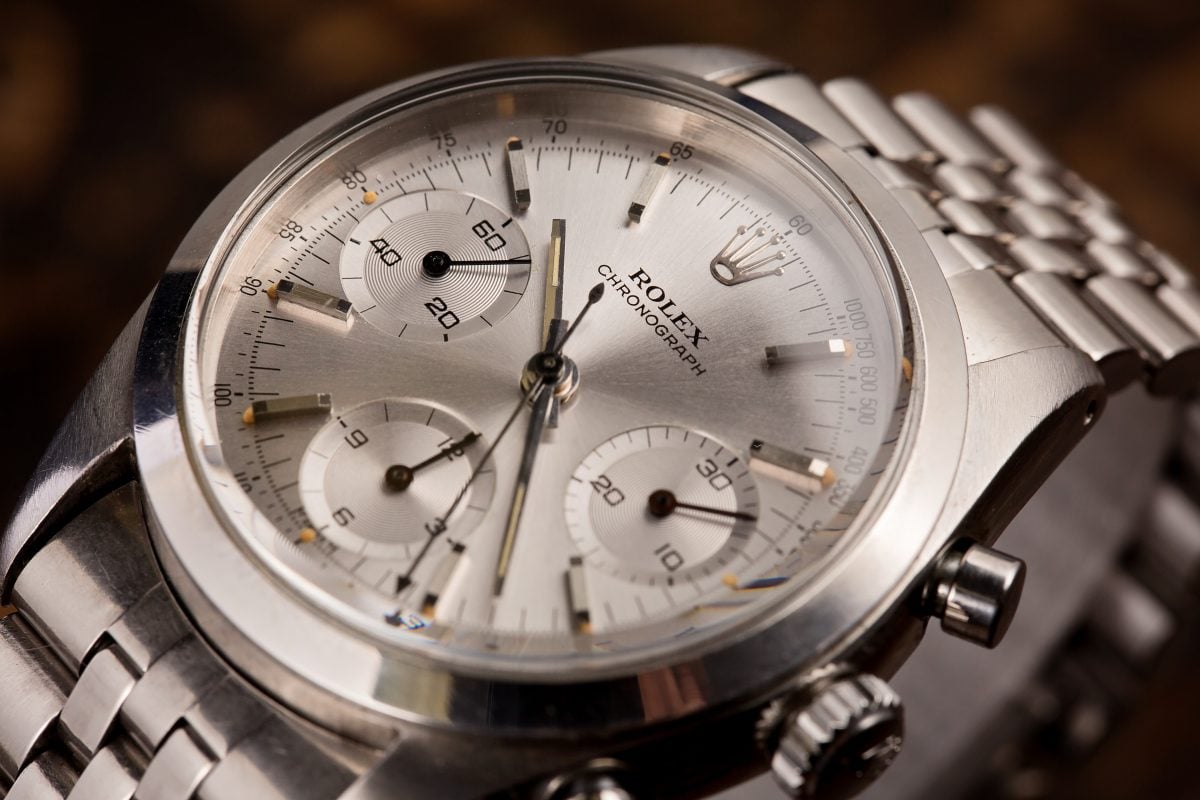
It was not until the release of the ref. 6239 in 1963 that the Daytona's tachymeter scale moved to its bezel, and the watch took the form of the Daytona that we all know today. Like its pre-Daytona predecessor, the ref. 6239 was powered by a similar Valjoux 72B movement, which was later replaced by the Valjoux 722. Initially, the watch only featured the distinction "Cosmograph" on its dial; the 'Daytona' name didn't start to appear until the mid-1960s - a change that was made to celebrate the brand's status as the official timekeeper of the Daytona Speedway.
Although a number of other Rolex Daytona references followed, the Daytona remained a manual-wind chronograph until 1988. During this time, the movement evolved and included the Valjoux 72, 722B, 722/1, and 727 - the last of which upgraded the Daytona to a higher frequency of 21,600bph, improving its overall accuracy. Despite incremental updates, it was not until the 1988 release of the next generation of Daytona watches that Rolex's chronograph finally received an automatic movement.
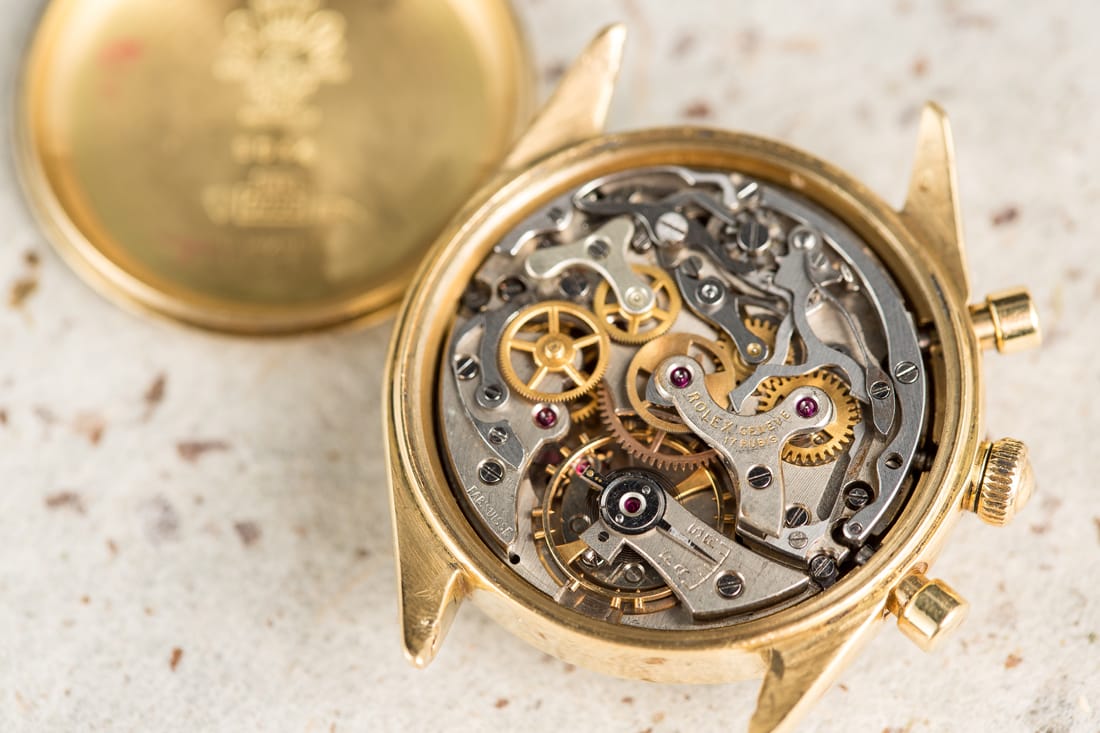
During the 1970s and 1980s, the fact that a manual-wind movement powered the Rolex Daytona during an era in which quartz movements were starting to dominate the market somewhat deterred its success. It wasn't until the release of ref. 16520 in 1988 that the Daytona started to become more widely sought-after among the general public. While this edition was the first Rolex Daytona to run on a self-winding movement, it was based on the Zenith "El Primero" chronograph caliber that was then modified by Rolex.
The Zenith movement was significantly modified in-house with over half the components swapped out to remove the date complication and lower the frequency to a slower rate of 28,800bph to achieve a longer power reserve. The result was the Cal. 4030, which remained in production until it was finally replaced by Rolex's first in-house chronograph movement in 2000 with the 6-digit reference Daytona watches.
This generation of 'Zenith Daytona' watches were the first to feature an increased case size of 40mm and also the first to have a case with crown-guards. Additionally, this generation also introduced lacquered dials and scratch-resistant sapphire crystals to the Rolex Daytona collection, giving this generation a noticeably more contemporary look and feel than its Valjoux-based predecessors.
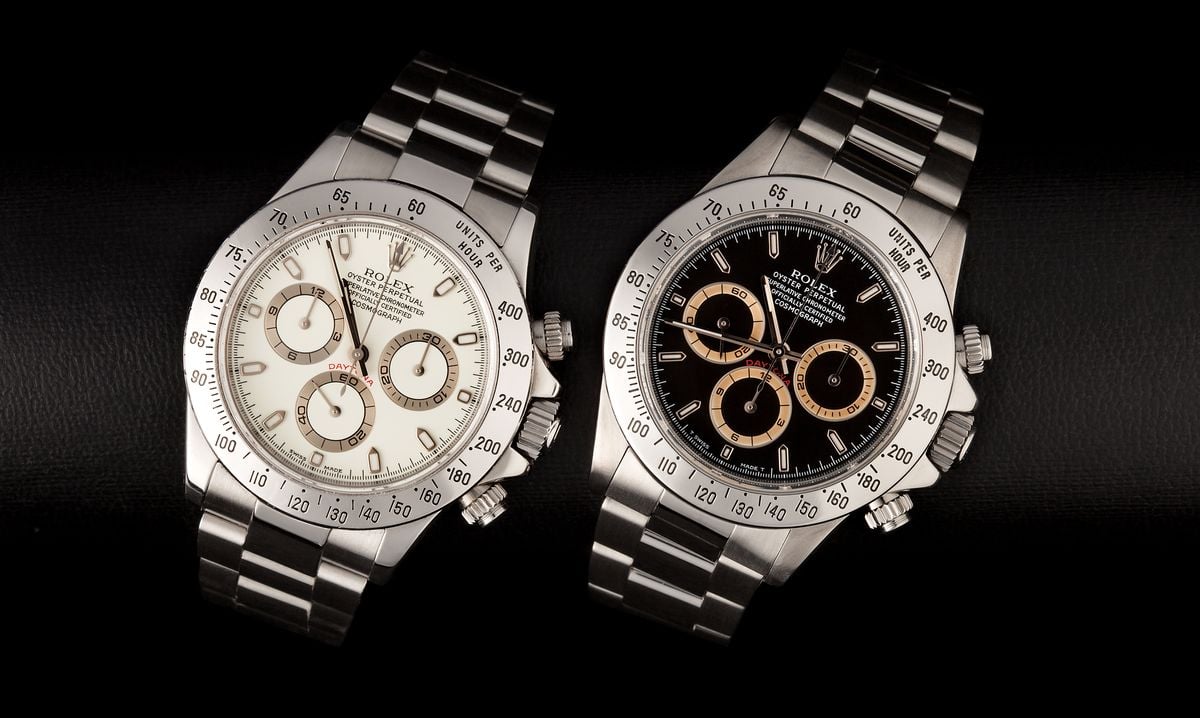
With the 6-digit reference generation of Daytona watches came a self-winding movement that was developed entirely in-house by Rolex: the Caliber 4130. The 44-jewel powerhouse boasted a longer 72-hour power reserve and higher resistance to shocks and magnetism due to the use of Rolex’s proprietary Parachrom hairspring.
The update in movement is evident on the dial with slight changes to the positioning of the chronograph registers. The small seconds counter (previously at the 9 o'clock position) swapped places with the 12-hour counter, which sat at the 6 o'clock location on the Zenith movement models. The cal. 4130 remains Rolex's go-to chronograph movement for its incredibly smooth operation and accurate reading, and it is still used to power every modern Daytona watch that Rolex sells today.
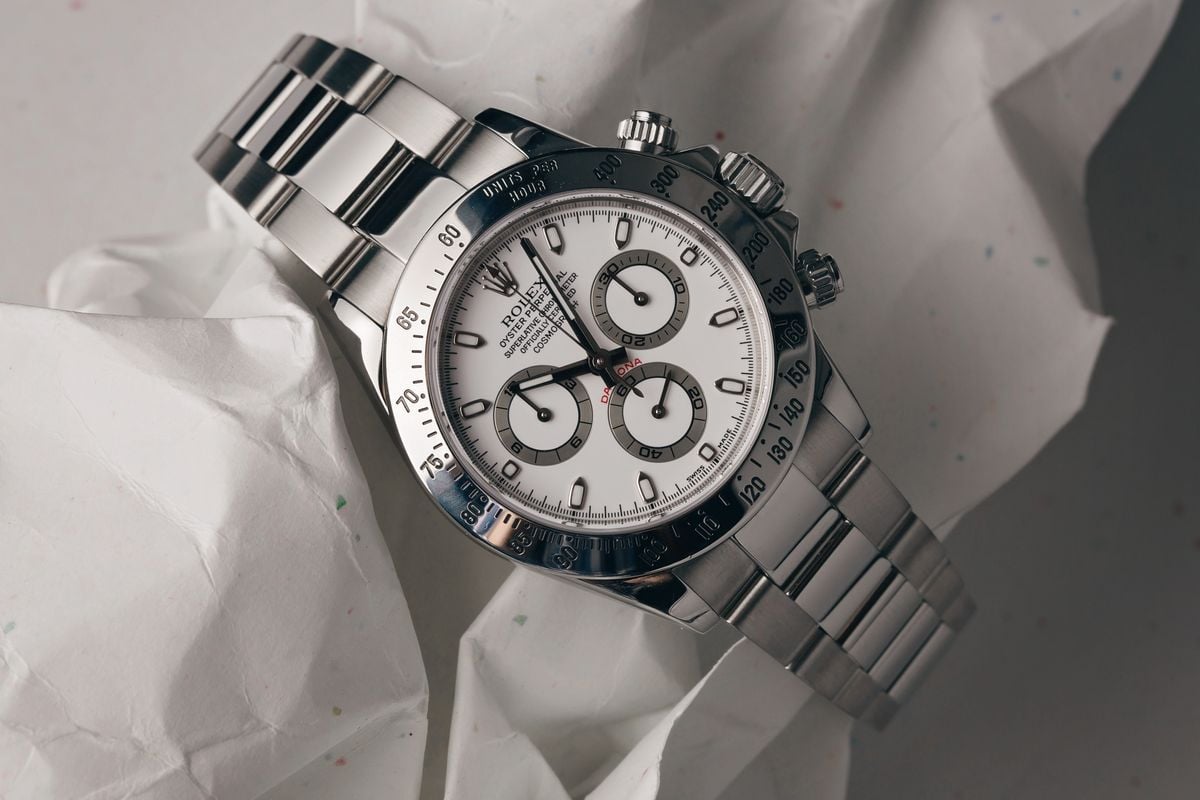
While the ref. 116520 made Rolex history as the first stainless steel Daytona to use the cal. 4130, at the present time, the most notable reference from the current generation of in-house Daytona watches is the stainless steel and ceramic bezel ref. 116500. This widely coveted version of the Daytona features longer-lasting Chromalight lume on the dial, and a bezel crafted from Rolex’s patented "Cerachrom” ceramic material. This edition of the Daytona marks the next phase in the model’s evolution; however, the movement used to power it remains largely the same as the one that Rolex first debuted back in 2000.
Between all of the different dial variations and noteworthy owners, the Rolex Daytona's history is far too long and complex to discuss in full detail in just one article. However, this brief history of the evolution of the chronograph's movement serves to shed more light on the Daytona's intriguing evolution, and perhaps create a greater appreciation for its diverse collection of references.
